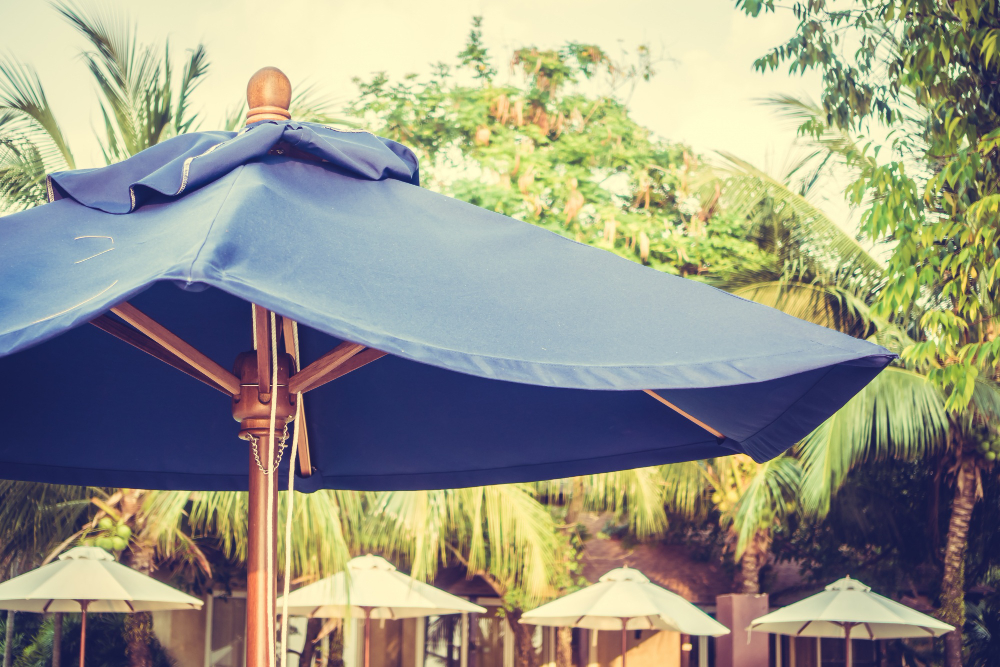Retractable awnings protect against harmful UV rays that cause furniture and wood flooring to fade over time. This minimizes the need for air conditioning, resulting in savings on electricity bills.
Awnings increase the usability of outdoor areas, allowing you to use your deck or patio any time of day. They also reduce the air temperature of outdoor spaces and can be expanded or retracted at the push of a button.
1. Increased Usability
Awnings are a great way to increase the useability of your outdoor space. They can be retracted or extended with the push of a button, and they’re available in various colors to match your home or business’s aesthetics.
They reduce the amount of sunlight that hits your patio, decreasing indoor temperatures and reducing your reliance on air conditioning. This means you can save money on your energy bills while enjoying your backyard!
They also protect your furniture from the sun’s UV rays, helping it last longer and keep it in better condition. Additionally, they shed water to prevent moisture from destroying the caulk or seals of your windows and doors.
2. Increased Value
In addition to the aesthetic benefits, retractable awnings offer several additional benefits that can increase property value. For example, they provide shade and protection from the sun’s harmful UV rays, which help to prevent wood and other materials from fading over time.
They also reduce the amount of heat accumulating in outdoor and indoor areas, lowering energy consumption and corresponding utility bills. Awnings are a great alternative to more expensive home improvements, such as building an addition or installing a conservatory. They also require minimal maintenance and are easy to clean. These factors make them a good investment for homeowners and commercial property owners.
3. Improved Appearance
Retractable awnings can transform any outdoor area into a beautiful and valuable space that adds value to your home or business. They can also be customized to fit your unique outdoor space and are often higher quality than a one-size-fits-all big box model.
Awnings that remain up year-round are exposed to rain, sleet, hail, and snow, damaging the hardware and fabric. However, retractable awnings retract into sheltered housing during lousy weather, preventing damage to the top and keeping it looking newer and brighter for longer.
Retractable awnings shade the outside of your home, which lowers the area’s temperature and allows you to save energy on air conditioning costs. Over time, this can make a significant difference in electricity savings.
4. Protection from UV Rays
It’s well-known that the sun emits UV radiation, which causes various health issues, including skin cancer and accelerated aging. Retractable awnings block harmful UV rays, making outdoor living safe and enjoyable for you and your family.
Retractable awnings also reduce solar heat gain in homes and businesses, keeping spaces cool without excessive air conditioning. This can save you significantly on your energy bills.
Extend your retractable awning on scorching summer days to create a comfortable, shady area for eating, reading, or entertaining. Then, retract it when the weather turns to prevent UV damage or light rain from interfering with your enjoyment of outdoor spaces. This flexibility gives you any-weather, all-season usability that other fixed awnings can’t offer. This is especially important for those who like to spend most of their time outdoors.
5. Reduced Temperature
Adding an awning helps reduce the amount of solar heat entering your home’s windows and doors, reducing energy costs. It also helps protect indoor furniture from the sun’s harmful UV rays.
Awnings come in various colors and styles, making them an attractive addition to your garden or patio. This enhances the aesthetic of your outdoor space and boosts the property’s value.
Final Words
Awnings can be retracted before storms or when unused, keeping them safer from damage. They also tend to last much longer than traditional awnings, constantly exposed to sunlight and other weather elements. They can be retracted with a button or automated by a wind, motion, sun, and rain sensor to increase their longevity and durability further.

